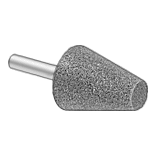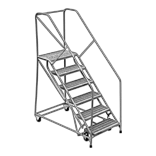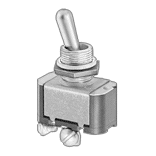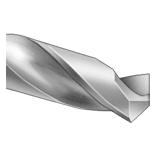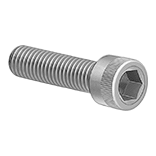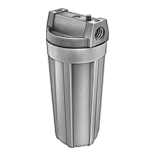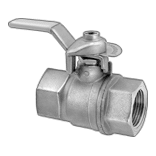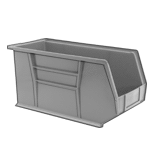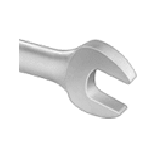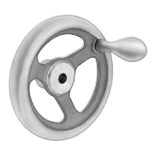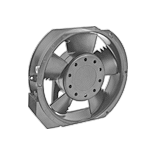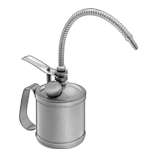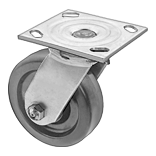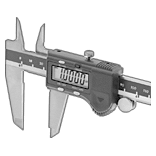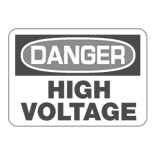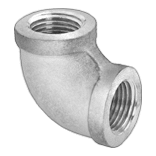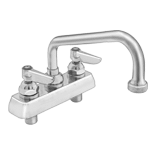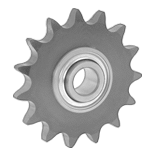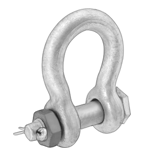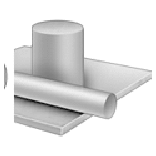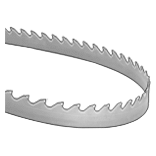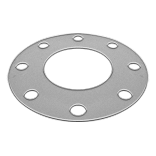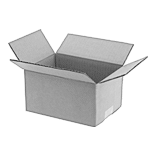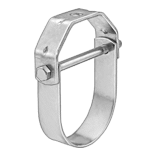Filter by
Power Over Ethernet Standard
Specifications Met
Certification
Input Current @ Voltage
Maximum Inrush Current @ Voltage
DFARS Specialty Metals
Export Control Classification Number (ECCN)
REACH
Protections Provided
Efficiency @ Voltage
External Power Supply Efficiency Standard
Ethernet Shielding
Power Over Ethernet Injectors
 |  |
IEC C5 Socket |
IEC C13 Socket |
With a single cord, send data and electricity to Power over Ethernet (PoE) compatible devices. These injectors are commonly used to run devices such as routers and wireless access points in areas where no power outlet is nearby. To run these injectors, you need a power cord and two Ethernet cords (all sold separately). Connect one Ethernet cord from your network hub to the input of the injector, and the other Ethernet cord from the injector to your device.
These injectors meet U.S., Canadian, and European standards for safety. All have a limited power source (LPS) rating, meaning they meet international safety standards for low-voltage output. They’re also rated for DOE Level VI efficiency, signaling they comply with Department of Energy efficiency requirements for power usage.
As these injectors convert AC voltage to DC voltage, some noise from the AC voltage will carry into the output. While this won't affect most applications, this noise can interfere with other signals in extremely sensitive applications. The lower the output noise, the less interference it creates.
When choosing an injector, consider how much power your device requires.
Passive Power Over Ethernet—Use passive injectors with passive devices. These injectors send power to connected devices at all times; if they are incompatible, the devices could be damaged.
Active Power Over Ethernet—Active injectors check for compatibility with connected devices before sending power, protecting those devices from possible damage. They’re backwards compatible, so injectors with higher output powers can still be used with lower-power devices that meet a different IEEE standard.
15.4 W Output—Injectors with a 15.4W output power are often used with internet-connected phones and simple surveillance cameras.
30 W Output—Injectors with a 30W output power commonly power advanced surveillance systems, wireless access points, and lighting.
60 W Output—Injectors with a 60W output power are a common choice for building automation components and video conferencing equipment.
90 W Output—Injectors with a 90W output power are often connected to TVs and monitors.
C6—For injectors with an IEC C6 input connection, choose power cords with an IEC C5 socket.
C14—For injectors with an IEC C14 input connection, choose power cords with an IEC C13 socket.
Shielded Ethernet—Injectors with shielded connections protect from electromagnetic interference (EMI).
CoC Tier 2—Injectors rated for CoC Tier 2 efficiency meet European standards for efficient power usage.
Output | Input Connection | For Power Cord Connection | Mounting | ||||||||||||||||||||||||||||||||||||||||||||||||||||||||||||||||||||||||||||||||||||||||||||||||
|---|---|---|---|---|---|---|---|---|---|---|---|---|---|---|---|---|---|---|---|---|---|---|---|---|---|---|---|---|---|---|---|---|---|---|---|---|---|---|---|---|---|---|---|---|---|---|---|---|---|---|---|---|---|---|---|---|---|---|---|---|---|---|---|---|---|---|---|---|---|---|---|---|---|---|---|---|---|---|---|---|---|---|---|---|---|---|---|---|---|---|---|---|---|---|---|---|---|---|---|
Power, W | Voltage, V DC | Current, amp | Max. Output Noise Peak-to-Peak, mV DC | IEC Style | Component | IEC | Component | Ethernet Shielding | Max. Transmission Distance, ft. | Ht. | Wd. | Dp. | Fasteners Included | No. of Holes | Hole Dia. | Certification | External Power Supply Efficiency Std. | Specs. Met | Each | ||||||||||||||||||||||||||||||||||||||||||||||||||||||||||||||||||||||||||||||||
Single Phase—100V AC to 240V AC Input Voltage | |||||||||||||||||||||||||||||||||||||||||||||||||||||||||||||||||||||||||||||||||||||||||||||||||||
Passive Power Over Ethernet | |||||||||||||||||||||||||||||||||||||||||||||||||||||||||||||||||||||||||||||||||||||||||||||||||||
| 15.4 | 56 | 0.275 | 200 | C6 | Plug | C5 | Socket | Shielded | 325 | 1.1" | 4.2" | 1.6" | No | — | — | UL Listed, C-UL Listed | DoE Level VI | IEEE 802.3af | 0000000 | 000000 | |||||||||||||||||||||||||||||||||||||||||||||||||||||||||||||||||||||||||||||||
Active Power Over Ethernet | |||||||||||||||||||||||||||||||||||||||||||||||||||||||||||||||||||||||||||||||||||||||||||||||||||
| 15.4 | 56 | 0.275 | 200 | C6 | Plug | C5 | Socket | Shielded | 325 | 1.1" | 4.2" | 1.6" | No | — | — | UL Listed, C-UL Listed | DoE Level VI | IEEE 802.3af | 0000000 | 00000 | |||||||||||||||||||||||||||||||||||||||||||||||||||||||||||||||||||||||||||||||
| 30 | 56 | 0.536 | 200 | C14 | Plug | C13 | Socket | Shielded | 325 | 1.2" | 5" | 1.8" | No | 2 | 1/8" | UL Listed, C-UL Listed | DoE Level VI, CoC Tier 2 | IEEE 802.3at | 0000000 | 00000 | |||||||||||||||||||||||||||||||||||||||||||||||||||||||||||||||||||||||||||||||
| 60 | 56 | 0.535 | 250 | C14 | Plug | C13 | Socket | Shielded | 325 | 1.4" | 6.4" | 2.6" | No | 2 | 1/8" | UL Listed, C-UL Listed | DoE Level VI, CoC Tier 2 | IEEE 802.3bt | 0000000 | 00000 | |||||||||||||||||||||||||||||||||||||||||||||||||||||||||||||||||||||||||||||||
| 90 | 56 | 1.6 | 250 | C14 | Plug | C13 | Socket | Unshielded | 325 | 1.7" | 6.5" | 3.15" | No | 2 | 1/8" | UL Listed, C-UL Listed | DoE Level VI | IEEE 802.3bt | 0000000 | 00000 | |||||||||||||||||||||||||||||||||||||||||||||||||||||||||||||||||||||||||||||||
